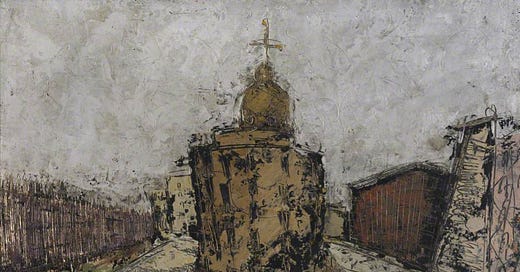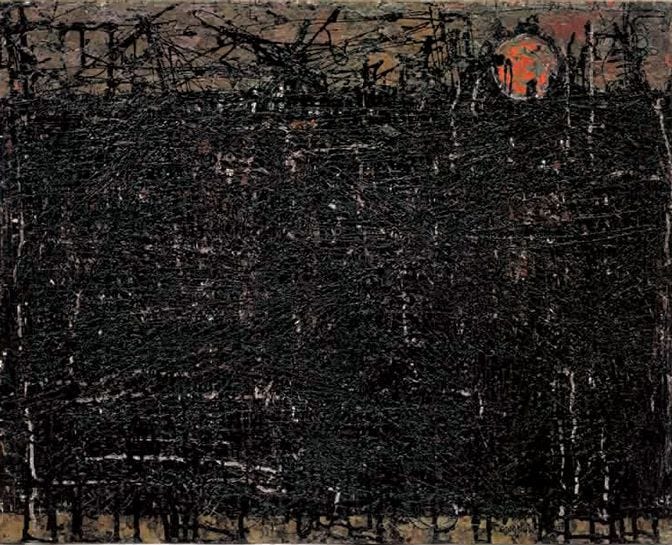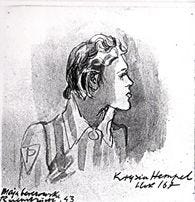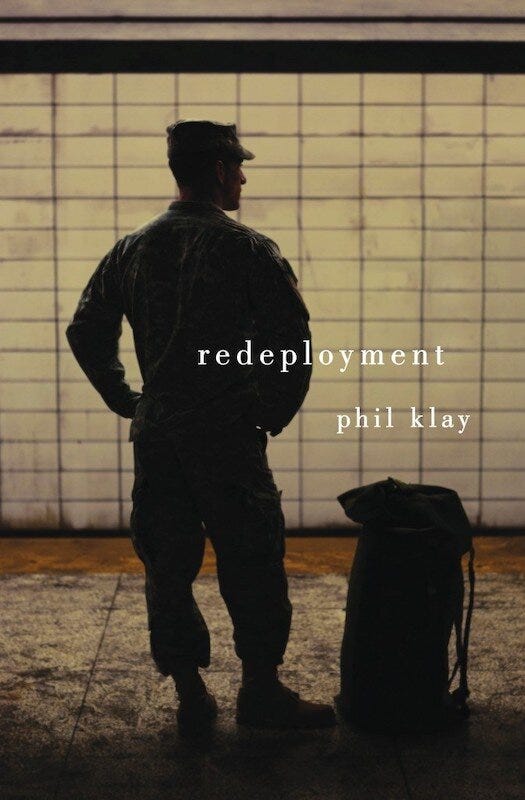Naples, Church, William Congdon
Imagining a Better World: Art and Wartime was one of the many important and informative workshops I attended earlier this month at the biennial Conference on the Catholic Imagination at the University of Notre Dame.
The three presenters introduced …
The art of a World War II ambulance driver
The secreted art and poetry of women imprisoned in a Nazi concentration camp
The award-winning fiction of a US Marine Iraq War veteran
There is too much to share in one posting as three academic papers were presented in this one colloquium so here is a summary with links for more information on this important topic.
Sarah Elizabeth Maple of Mount Saint Mary College presented her paper,“Beautiful Abstraction and Artistic Imagination,” featuring the works of artist William Congdon (1912-1998) who said,
“I paint on black because painting is not representing a light that is and that’s all, but rather participating in the light that is becoming out of the darkness.”
Black City on Gold River, William Congdon
Congdon’s experience as an ambulance driver in World War II informed much of his work. Maple spoke of Congdon’s reverence for darkness being manifested in the Light of Christ and of abstract art as returning man to his interior life.
Maple also made note of man’s artistic intuition and of finding an invitation to be creative in Genesis 1:26-29.
You can find more on Congdon’s life and art at Congdon Foundation - Page
Ewa Rejman | The Law School | University of Notre Dame presented “They Didn’t Suppress our Humanity: Works of Art in World War II Concentration Camps.” Rejman spoke at length of the courage and creativity of nearly 120,000 women from 30 countries who were tragically held for political and racist reasons at the Ravensbrück camp (north of Berlin) during the Second World War. Many of the women were united by the aesthetic experience of art. Some created miniature carvings out of material obtained clandestinely while others drew, or wrote poetry when writing was a punishable offense. Sculptures, drawings, written prayers, and 1,200 poems have been found. More can be found at Women from Ravensbrück and Art in the Ravensbrück Concentration Camp
William Gonch, PH.D. of Ava Maria University presented “Idolatry and Sacramentality: The Liturgy of War in Phil Klay’s Fiction.” One of Klay’s book, Redeployment, won the 2014 National Book Award for Fiction and the National Book Critics' Circle John Leonard Prize for best debut work in any genre and was selected as one of the 10 Best Books of 2014 by The New York Times.
Gonch spoke of how Klay (b. 1983) both honors and critiques, finds heroes and victims, while avoiding a narrative structure that gives war the illusion of normalcy. More on Klay can be found at Phil Klay
Varied experiences and approaches to dealing with the trauma of war. Sobering and unsettling, but important and therapeutic — helpful and hopeful for imagining a better world.







